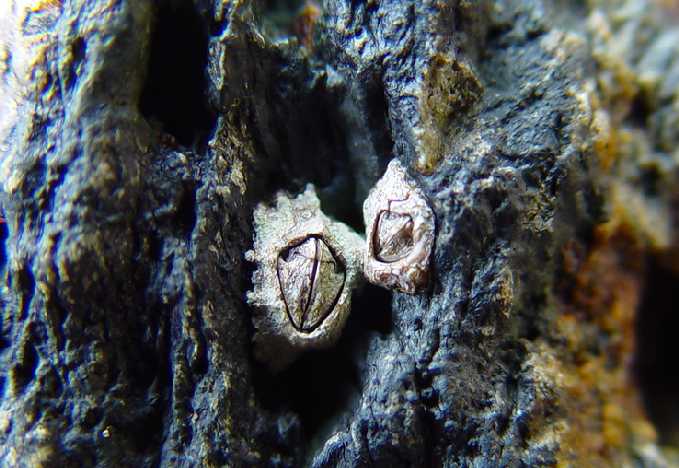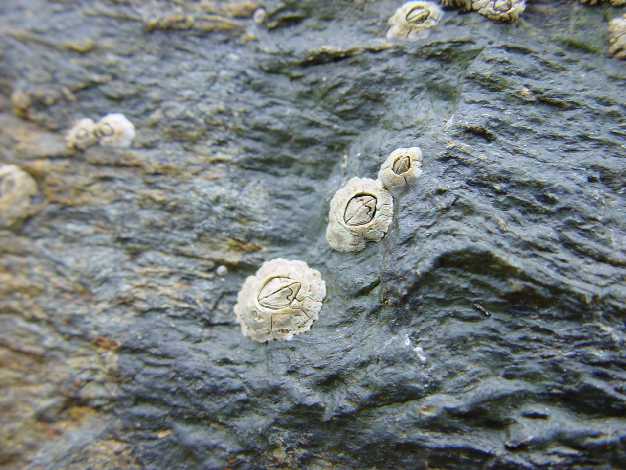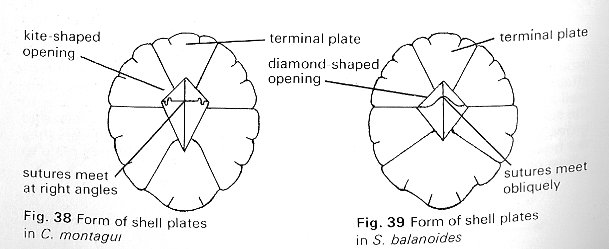
Identifying Intertidal Barnacles in the UK
Barnacles are one the most common animals to be found on rocky
shores. The distribution patterns are also very interesting, and the
reasons for the patterns found quite well understood. It is worth,
therefore, making an effort to distinguish the species in any shore
survey.
If you look in a standard rocky shore guide (such as Campbells book)
you will see a number of barnacle species discussed (in the case of the book
mentioned 16 species in all, in my edition). This sounds very daunting,
so let us try to simplify.
Some are goose barnacles, the littoral ones are acorn barnacles.
Some are hardly likely to be found in the zone that most students will
visit because they are very low shore to below low tide.
Some are parasites or live in other specialist places.
Of the 16 alluded to, then, we are down to having to consider just FOUR.
The commonest around Britain is the species Semibalanus balanoides
(formerly Balanus balanoides).
This species has a DIAMOND shaped opening to the top and the SUTURES meet at obliquely:


In the very similar Chthamalus species (montagui and stellatus) the opening is
KITE shaped and the sutures meet at right angles.

(Picture from Campbell)
These simple rules should work, although it has to be admitted there is some variability.
Finally, you may encounter, especially in the Channels,
the Introduced Australian species Elminius modestus. This has only
FOUR plates to the shell as opposed to the SIX in the native species.
ZONATION
Semibalanus and Chthamalus live together on rocky shores and, where they meet, they compete. This leads to a pattern of zonation with a band of Chthamalus above and Semibalanus below. There is transect through the barnacle zone here